With Liverpool’s first season under Arne Slot taking a pause for international football, it gives us an opportunity to analyse what has changed so far.
After nine years of Jurgen Klopp, many were quick to speculate on just how different the new coach’s football would be.
We’ve seen Slot-ball three times at the highest level now. So what have we learned about Slot at Liverpool?
Pragmatic
One moment in the dominant win at Old Trafford encapsulated a lot of what Slot has brought to Liverpool. It begins with Virgil van Dijk receiving the ball on the halfway line.

We’ve seen this exact scenario many times over the years. Van Dijk’s signature pass is a long, accurate switch out to the right flank, where a teammate can run directly at their defender.
And here, Trent Alexander-Arnold – no longer inverting into midfield but pushing forwards from right-back – is available for exactly this ball.
Only this time, Van Dijk makes a different choice. He punches a ball through the lines to Ryan Gravenberch…

…who is playing as one of the deepest midfielders. His first touch gets him out behind the United press, allowing him to run at the defence…
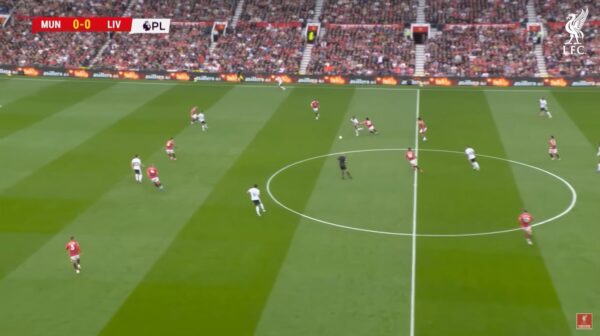
…and the ball is ultimately turned in by Alexander-Arnold, though VAR disallowed the goal.
We’ve been expecting to see lots of possession, short passes, playing through pressure – hallmarks of Slot-ball that we observed at Feyenoord. And this move is a good example of that.
The thing is, though, we’ve seen this kind of football almost as an addition or a bonus so far. We saw Van Dijk play one of his trademark switches in the buildup to the second goal vs. Ipswich.

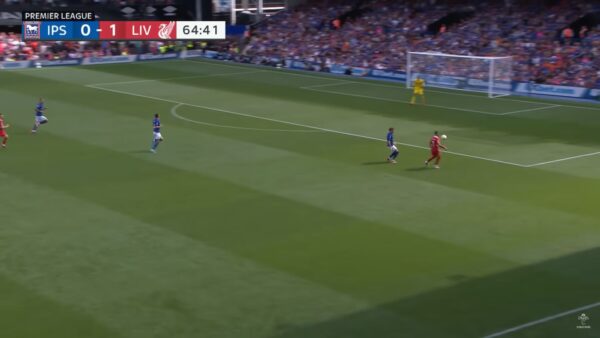
We saw a blistering counter-attack goal to take the lead versus Brentford.
11.6s ?? pic.twitter.com/xmp83I1pux
— Liverpool FC (@LFC) August 27, 2024
And for all three goals that stood vs. Man United, Liverpool pressed high and forced United into decisive errors.
What this tells us about Slot is that he’s a pragmatist.
Rather than dogmatically sticking to his vision – like coaches such as Ange Postecoglou – he’s happy to let his team keep playing to their strengths, while making small changes that allow them to evolve their game.
Problem-solver
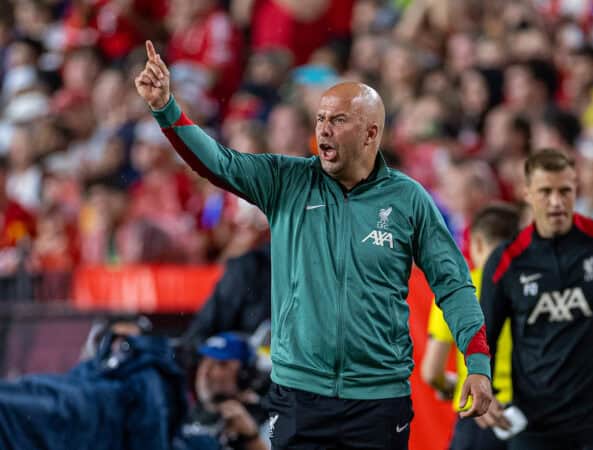
What are some of these small changes? Well, the obvious one is the switch to a double pivot in midfield.
But it’s not because Slot has a philosophical attachment to a formation – in fact, he has been adamant that he does not use a 4-2-3-1, with his setup simply a different interpretation of a 4-3-3.
It’s more a response to Liverpool’s tendency to concede counter-attacks, which denied them control of games last season.
By switching to two deeper midfielders, Slot has simplified his full-backs’ game. At Old Trafford we saw Alexander-Arnold tracking back to defend counters himself, rather than relying on a teammate to cover.
It also allows Liverpool to commit more players to buildup, with six players (four defenders and two in midfield) showing for the ball.
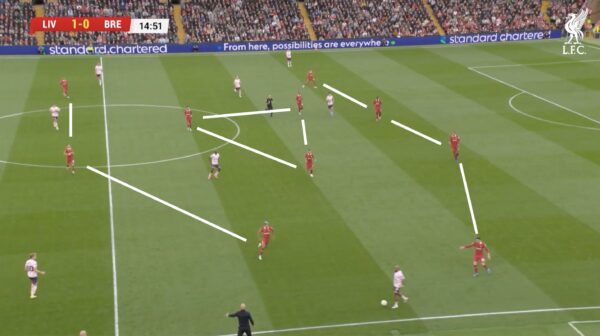
Players can easily find a short pass to a teammate, and with the opposition forced to commit numbers forward to press, it also allows for direct balls up to the front line.
This adds up to a team that can dominate possession easily, has opportunities to go direct at the right time, and has a better structure to defend counter-attacks.
Heavy metal with a deeper, more solid base.
Decisive
Perhaps the most eye-catching example of Slot’s decisiveness was his substitution of Jarell Quansah at half-time vs. Ipswich.
But while that change grabbed the headlines, Slot has been fronting up to the big calls from day one – and getting them right.
Trent Alexander-Arnold: right-back. Ryan Gravenberch: No. 6. Diogo Jota: centre-forward.
These are the three big positional calls Slot has made so far, and all three have worked well.
The use of the full-back we’ve already covered, with Alexander-Arnold already notching two ‘pre-assists’ (the pass before the pass) alongside his three clean sheets.
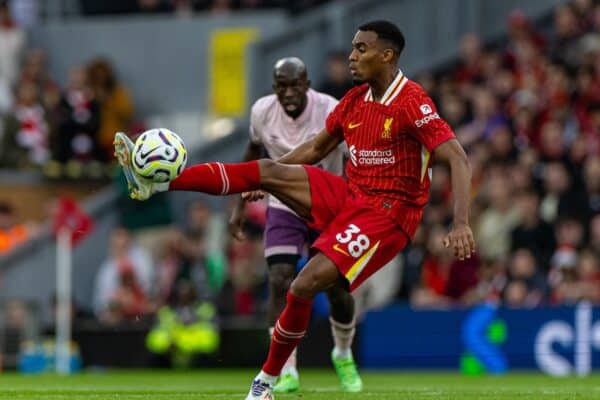
Gravenberch struggled to nail down a place in Klopp’s 4-3-3, but he’s been integral to Slot’s double pivot.
His technical security allows Liverpool to play passes like Van Dijk’s at Old Trafford, and his ability to carry the ball forwards has helped to overload opposition defences.
And with the benefit of a partner alongside him and a back four behind him, he can step up to win the ball at the right moment.

As for Jota, he’s dovetailed effectively with his No. 10. He’s free to drop deep and link play, create space for Dominik Szoboszlai to run beyond him, and pull wide to rotate with his wingers – as well as getting on the end of chances himself.
This has also had a positive impact on Luis Diaz. After scoring just eight times in 37 league games last season, he has three in three so far.
Throughout his Liverpool career, he’s tended to get on the ball out wide and then drive inside to make his own chances, leading to some spectacular goals but not spectacular goal numbers.
Under Slot, he’s been much more direct: finishing off a counter-attack vs. Brentford before scoring twice against United – both with a first-time shot.
By removing the onus on him to stick to the touchline, Slot has given him the platform to score more frequently.
No stone unturned
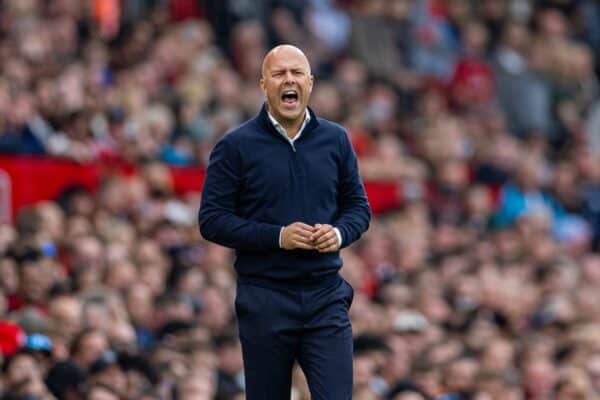
The thing is, the best is still surely to come from Slot tactically.
For all of the clip-worthy passages of play, we’re still waiting for the first goal to come from eye-catching pass-and-move football.
So far it’s been direct balls up top (vs. Ipswich), clinical counter-attacking (vs. Brentford) or winning the ball high up the pitch (vs. Man United).
It takes time for a new approach to properly click.
But Slot is allowing his players to still play in transition, press aggressively and do all the things that worked well under Klopp, and they’re still paying dividends.
That means that while Liverpool learn how to play their best football, they’re still winning and winning well.
Perhaps we’ll look back on this start and say: this is when we learned that Arne Slot is a winner.









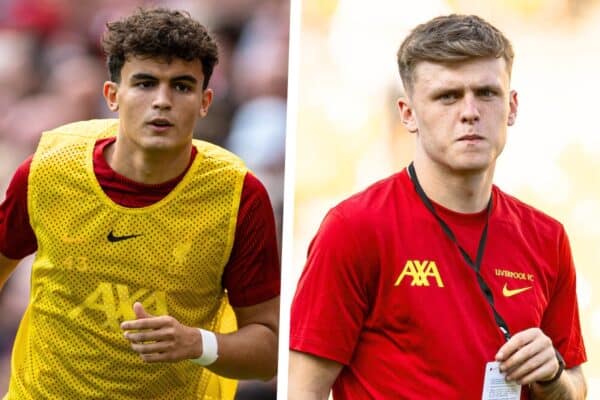

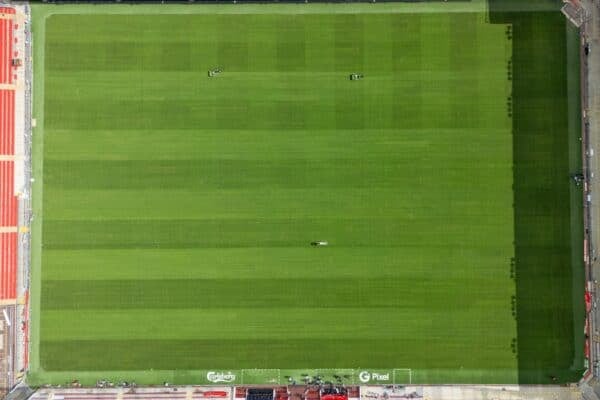
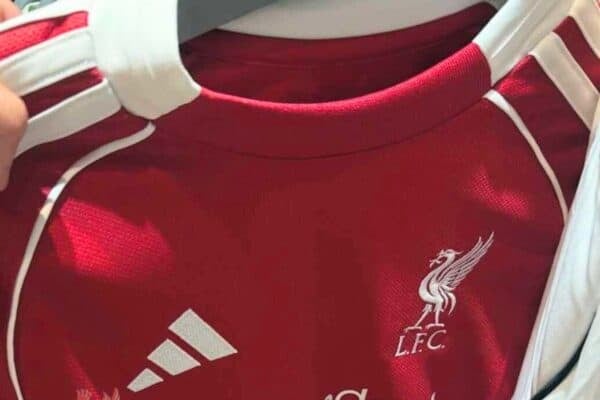
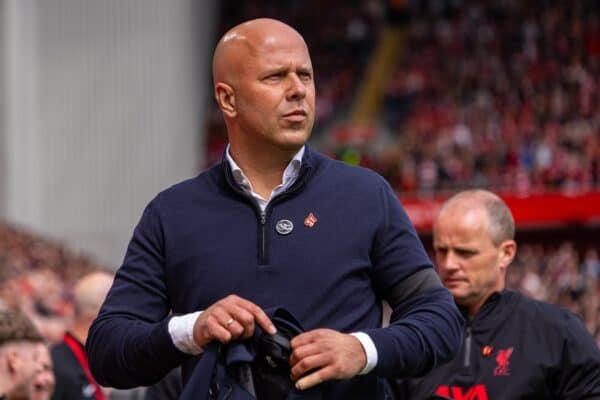





Fan Comments